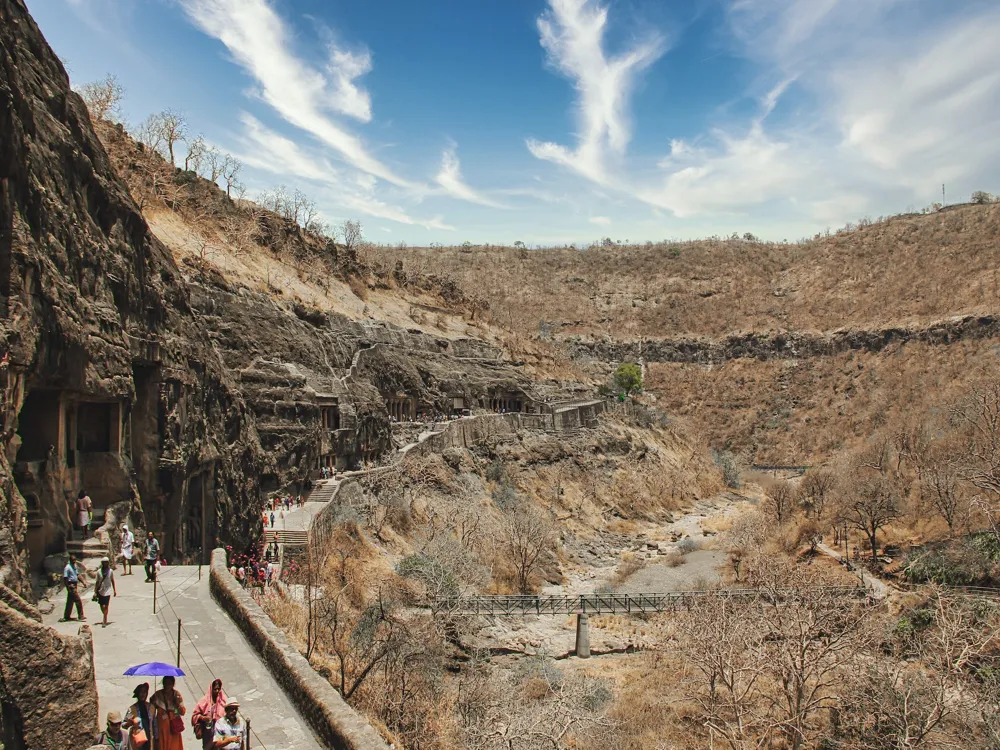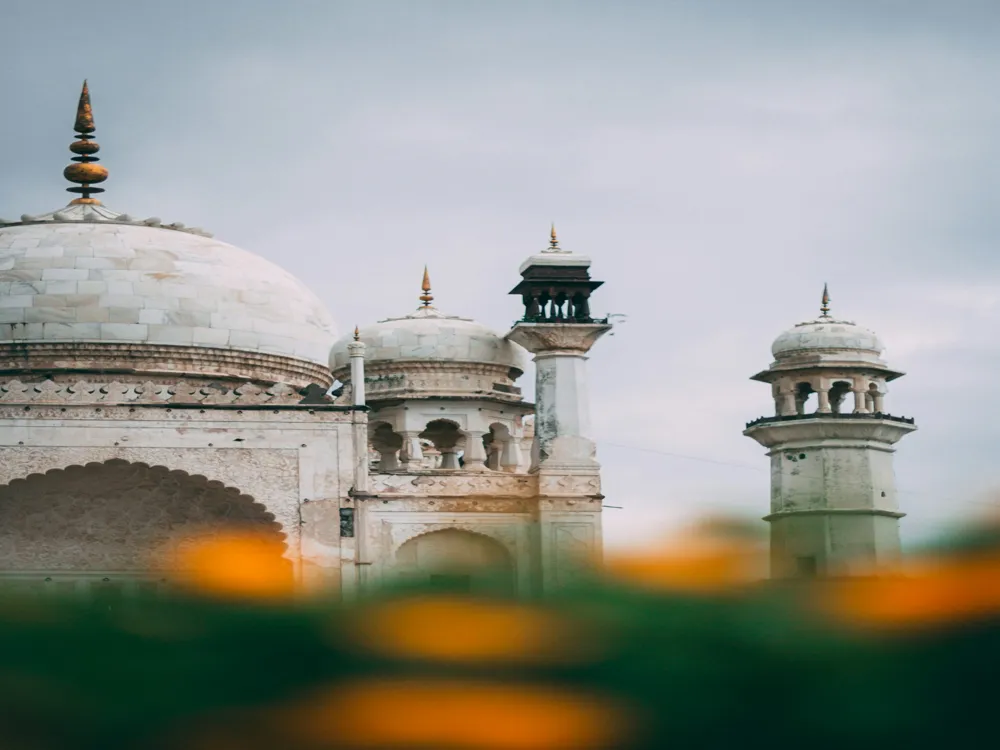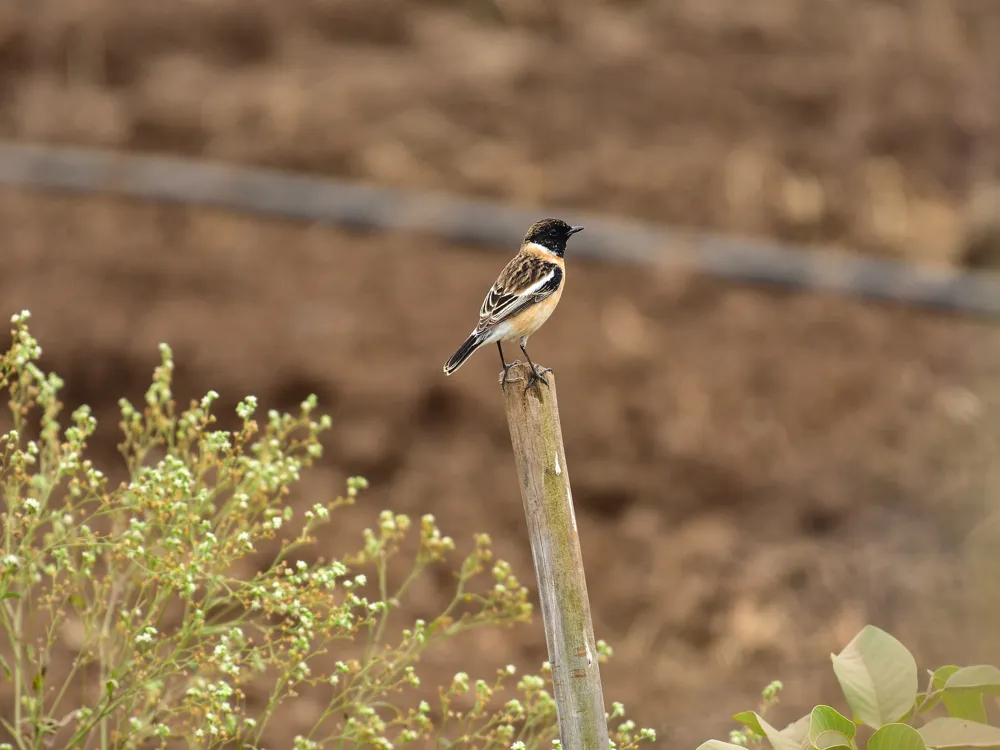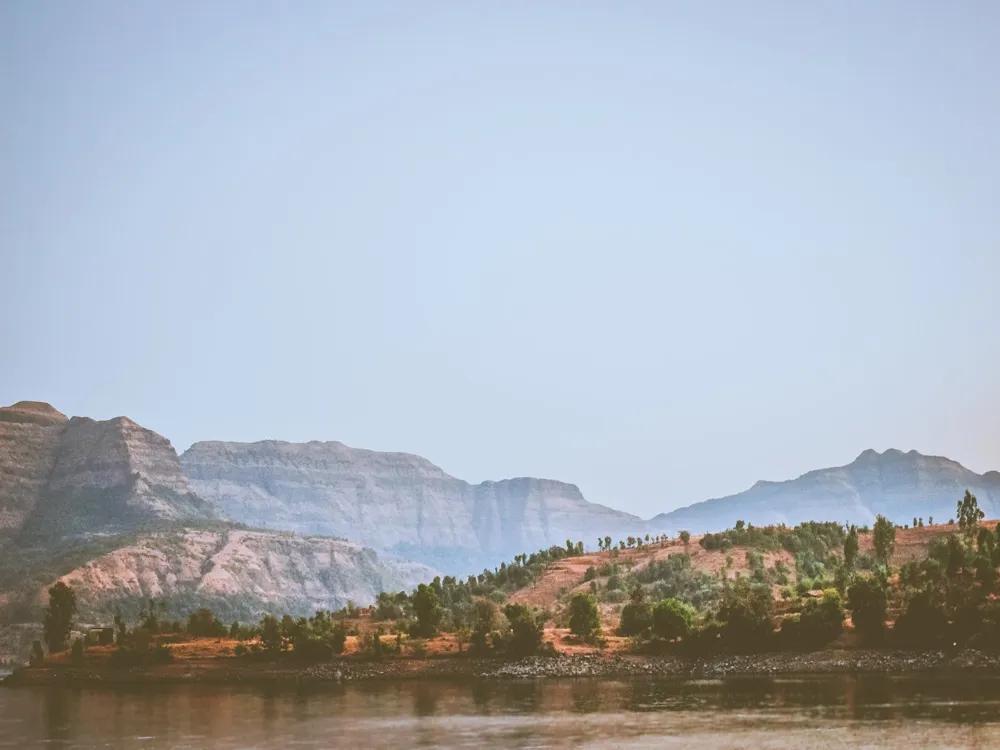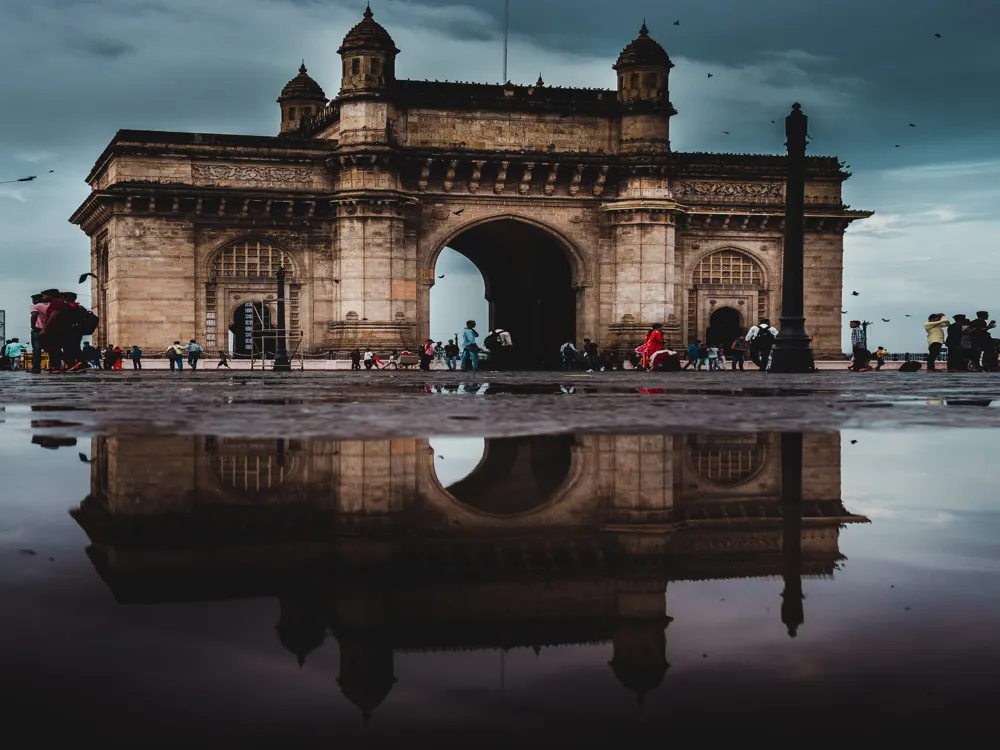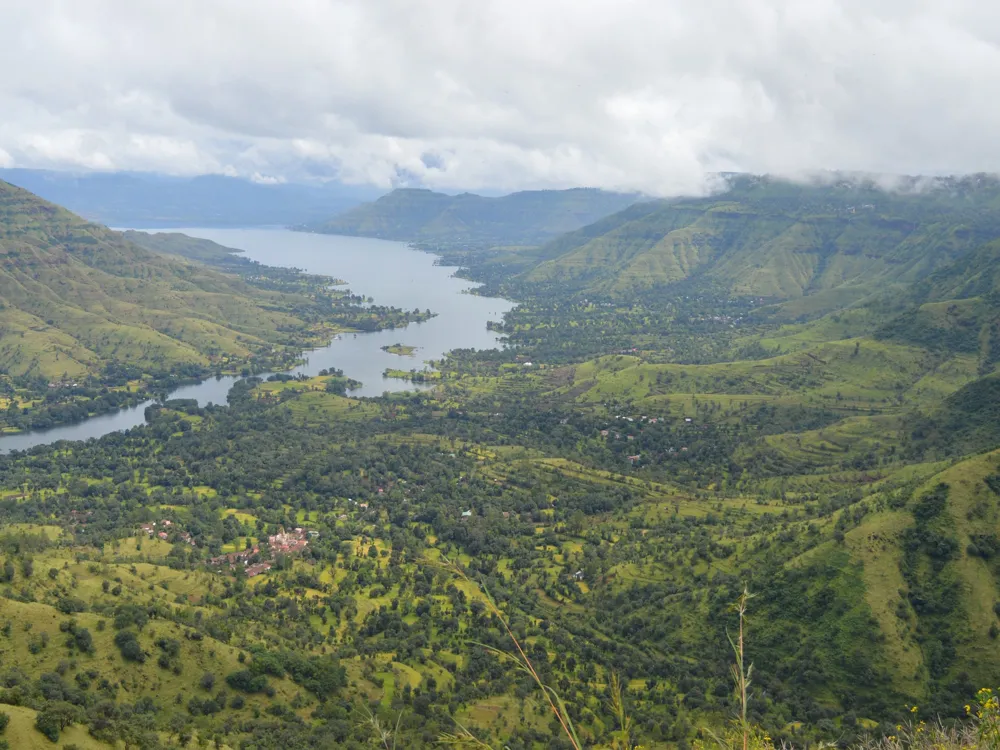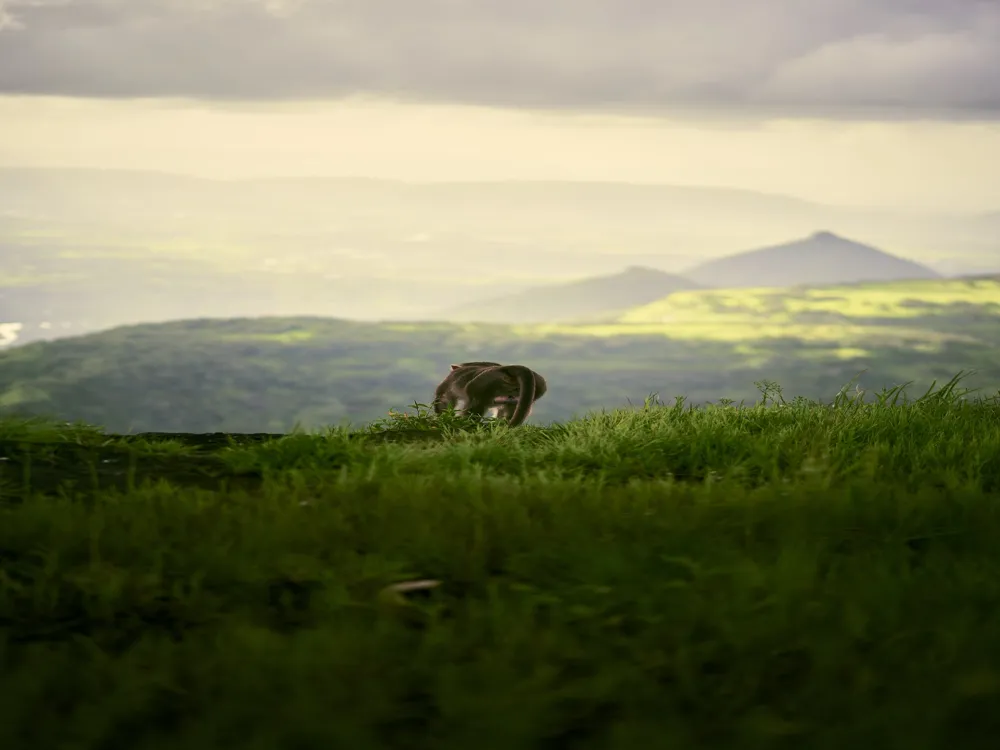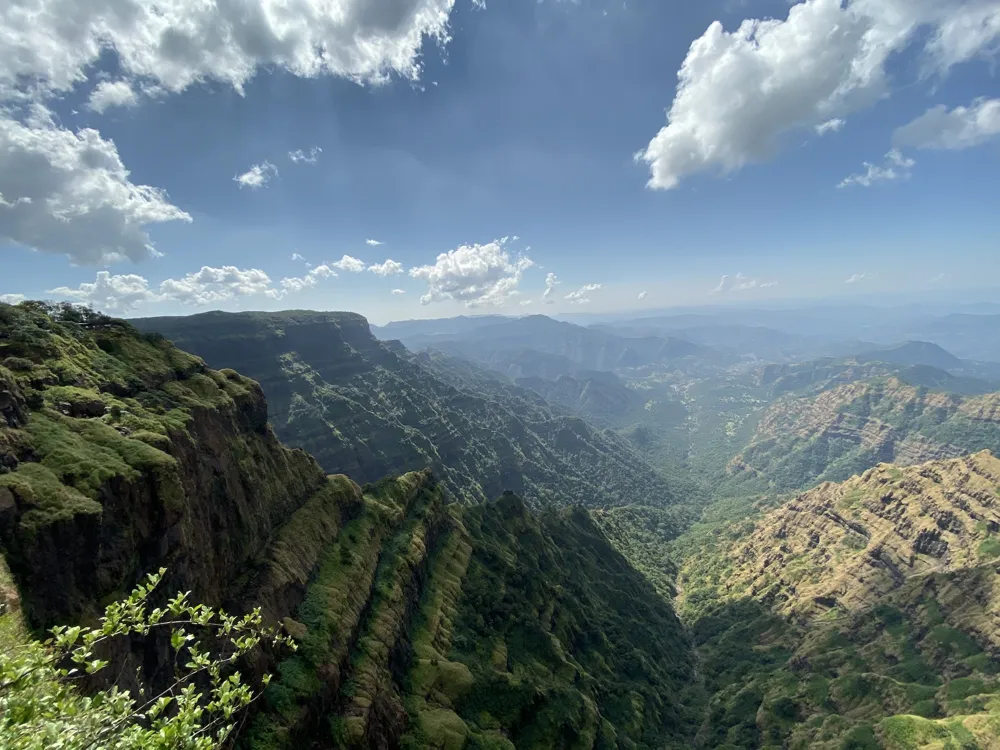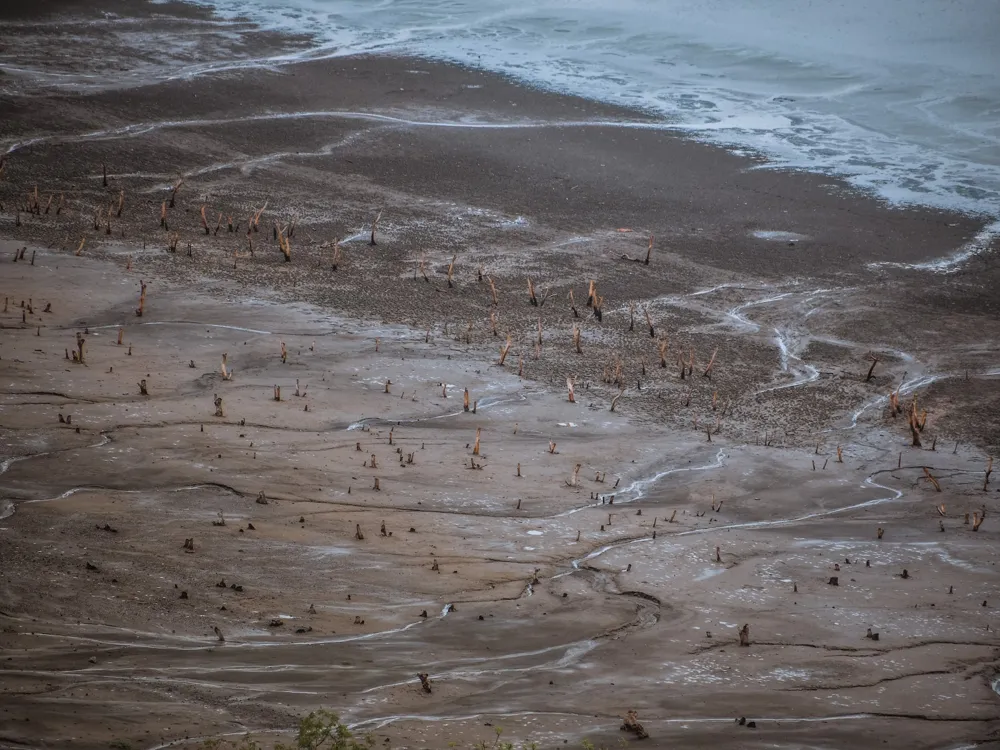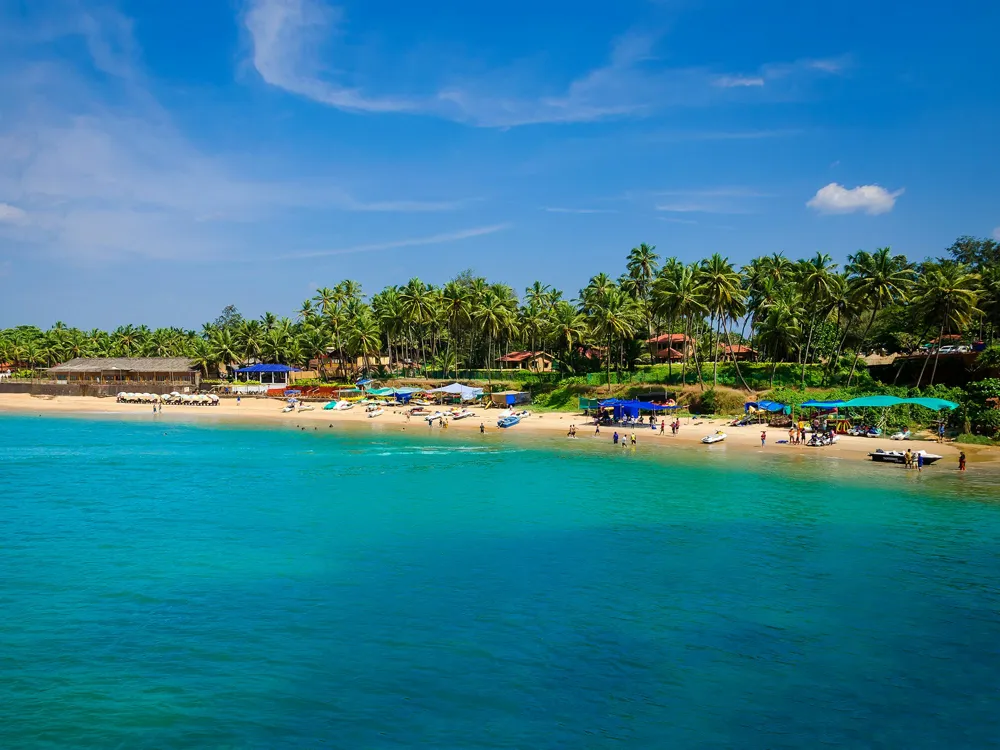Nestled in the lush landscapes of Maharashtra, the Ajanta and Ellora Caves are a testament to ancient Indian art and architecture. These UNESCO World Heritage Sites, dating back to the 2nd century BCE, present a confluence of Buddhist, Hindu, and Jain heritage, making them a pivotal historical and cultural landmark. The Ajanta Caves, primarily Buddhist, are renowned for their stunning frescoes and sculptures. These 29 caves were carved into the sheer vertical side of a crescent-shaped gorge and were used as retreats by Buddhist monks. The paintings and sculptures predominantly narrate the Jataka tales and depict scenes from the Buddha's life. In contrast, the Ellora Caves, a larger and more varied group of 34 caves, date back to between the 6th and 11th centuries CE. These caves are an intricate blend of religious arts of Buddhism, Hinduism, and Jainism. The Kailasa Temple in Cave 16, dedicated to Lord Shiva, is particularly notable for being the world’s largest monolithic sculpture. Together, Ajanta and Ellora offer an immersive journey through India's rich religious and artistic history, attracting historians, art lovers, and tourists from around the globe. The architectural grandeur of the Ajanta Caves is a fascinating subject for study. Carved into the rocky hillsides, these caves showcase a mastery of ancient engineering and artistic skills. The architects and artisans of Ajanta used hammers and chisels to excavate the caves and create intricate designs and structures. The caves are broadly classified into Chaitya-grihas (chapels) and Viharas (monasteries). The Chaitya-grihas house stupas and are adorned with ornate facades and beautifully carved pillars. The Viharas, used for meditation and study, consist of living quarters, sleeping cells, and a central hall. Intricate carvings, murals, and sculptures depicting various Buddhist deities and Jataka tales enhance the spiritual ambiance of these caves. The murals and frescoes of Ajanta are particularly significant, known for their naturalism and narrative content. They utilize a complex technique involving the application of colors over a wet lime plaster base, a method that has preserved these artworks for centuries. The color palette primarily includes mineral pigments like lapis lazuli, ochre, and hematite. The representation of light and shadow, facial expressions, and body language in the sculptures and paintings of Ajanta reflect the high level of skill achieved by the artists of that era. The overall architectural layout, combined with the artistic embellishments, makes the Ajanta Caves an exemplary showcase of ancient Indian art and architecture. The best time to visit Ajanta Caves is between November and March when the weather is relatively cooler. It's advisable to start early in the day to avoid the afternoon heat and crowds. Consider hiring a government-approved guide to enrich your visit with detailed insights into the history and significance of the caves. Audio guides are also available. Carry water, wear comfortable walking shoes, and bring a hat or an umbrella for sun protection. Photography is allowed, but tripods and flash are prohibited inside the caves. These caves are ancient and fragile. Touching the paintings or sculptures is strictly prohibited to prevent damage. The Ajanta Caves are located about 100 kilometers from Aurangabad, Maharashtra. The nearest airport is Aurangabad Airport. From there, visitors can hire taxis or take buses to reach the caves. The nearest railway station is Jalgaon, about 60 kilometers from Ajanta. Accommodation options ranging from budget to luxury are available in Aurangabad and Jalgaon. Read More: Ajanta And Ellora Caves Tourism Best Time to Visit Ajanta and Ellora CavesOverview of Ajanta and Ellora Caves
Architecture of Ajanta Caves
Tips When Visiting Ajanta Caves
Plan Your Visit
Guided Tours
Travel Essentials
Respect the Heritage
How To Reach Ajanta Caves
Ajanta Caves
Ajanta And Ellora Caves
Maharashtra Goa
NaN onwards
View ajanta-and-ellora-caves Packages
Weather :
Label : Must Visit
Tags : Cave
Timings : 8:00 AM - 5:00 PM (Tuesday-Sunday), Closed on Mondays
Time Required : 2-3 hours to explore. Another 2-3 hours to reach from Aurangabad or Jalgaon (one-way).
Entry Fee : Indians: INR 10, Foreigners: INR 250, Camera: INR 25
Planning a Trip? Ask Your Question
Ajanta-and-ellora-caves Travel Packages
View All Packages For Ajanta-and-ellora-caves
Top Hotel Collections for Ajanta-and-ellora-caves

Private Pool

Luxury Hotels

5-Star Hotels

Pet Friendly
Top Hotels Near Ajanta-and-ellora-caves
Other Top Ranking Places In Ajanta-and-ellora-caves
View All Places To Visit In ajanta-and-ellora-caves
Faq on Ajanta-and-ellora-caves
What are Ajanta Caves and Ellora Caves?
Ajanta Caves and Ellora Caves are ancient rock-cut cave complexes located in the state of Maharashtra, India. They are renowned for their exquisite Buddhist, Hindu, and Jain cave temples and sculptures dating back to the 2nd century BCE to the 5th century CE.
How were Ajanta and Ellora Caves built?
The caves were carved out of solid rock by skilled artisans and laborers using simple tools like chisels and hammers. The process involved cutting into the rock face to create intricate cave structures, halls, and sculptural elements.
What is the significance of Ajanta and Ellora Caves?
Ajanta and Ellora Caves are significant for their religious, historical, and artistic value. They showcase the evolution of Indian art and architecture, particularly in the context of Buddhism, Hinduism, and Jainism. The caves also serve as important pilgrimage sites and attract tourists and scholars from around the world.
How many caves are there in Ajanta and Ellora?
Ajanta Caves comprise around 30 rock-cut caves, mainly Buddhist monasteries and prayer halls, while Ellora Caves consist of over 100 caves representing Buddhist, Hindu, and Jain faiths.
Can visitors explore Ajanta and Ellora Caves?
Yes, both Ajanta and Ellora Caves are open to visitors. Tourists can explore the intricate cave temples, admire the ancient sculptures and paintings, and learn about the rich cultural heritage of India.
View ajanta-and-ellora-caves Packages
Weather :
Label : Must Visit
Tags : Cave
Timings : 8:00 AM - 5:00 PM (Tuesday-Sunday), Closed on Mondays
Time Required : 2-3 hours to explore. Another 2-3 hours to reach from Aurangabad or Jalgaon (one-way).
Entry Fee : Indians: INR 10, Foreigners: INR 250, Camera: INR 25
Planning a Trip? Ask Your Question
Ajanta-and-ellora-caves Travel Packages
View All Packages For Ajanta-and-ellora-caves
Top Hotel Collections for Ajanta-and-ellora-caves

Private Pool

Luxury Hotels

5-Star Hotels

Pet Friendly
Top Hotels Near Ajanta-and-ellora-caves
Other Top Ranking Places In Ajanta-and-ellora-caves
View All Places To Visit In ajanta-and-ellora-cavesFaq on Ajanta-and-ellora-caves
What are Ajanta Caves and Ellora Caves?
Ajanta Caves and Ellora Caves are ancient rock-cut cave complexes located in the state of Maharashtra, India. They are renowned for their exquisite Buddhist, Hindu, and Jain cave temples and sculptures dating back to the 2nd century BCE to the 5th century CE.
How were Ajanta and Ellora Caves built?
The caves were carved out of solid rock by skilled artisans and laborers using simple tools like chisels and hammers. The process involved cutting into the rock face to create intricate cave structures, halls, and sculptural elements.
What is the significance of Ajanta and Ellora Caves?
Ajanta and Ellora Caves are significant for their religious, historical, and artistic value. They showcase the evolution of Indian art and architecture, particularly in the context of Buddhism, Hinduism, and Jainism. The caves also serve as important pilgrimage sites and attract tourists and scholars from around the world.
How many caves are there in Ajanta and Ellora?
Ajanta Caves comprise around 30 rock-cut caves, mainly Buddhist monasteries and prayer halls, while Ellora Caves consist of over 100 caves representing Buddhist, Hindu, and Jain faiths.
Can visitors explore Ajanta and Ellora Caves?
Yes, both Ajanta and Ellora Caves are open to visitors. Tourists can explore the intricate cave temples, admire the ancient sculptures and paintings, and learn about the rich cultural heritage of India.





